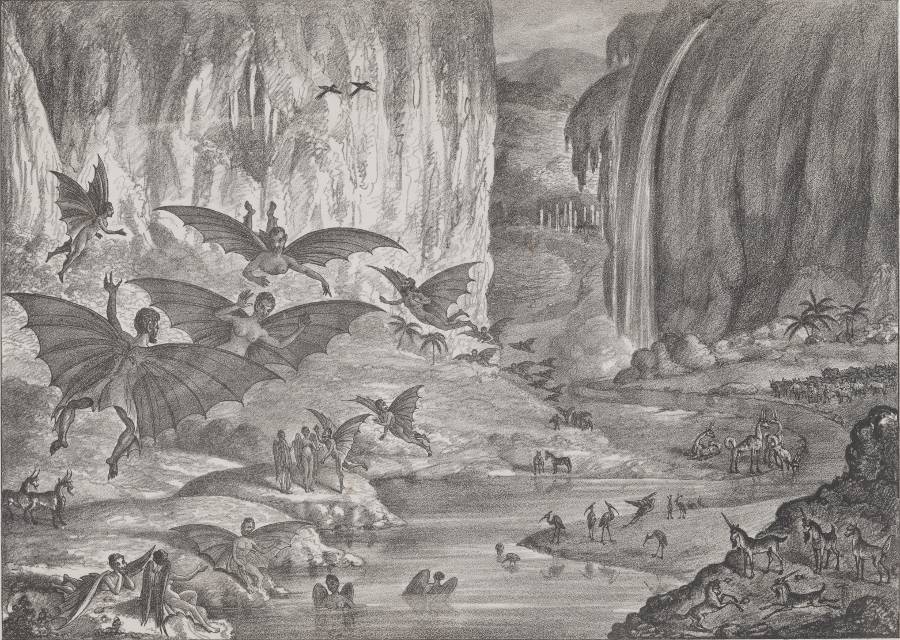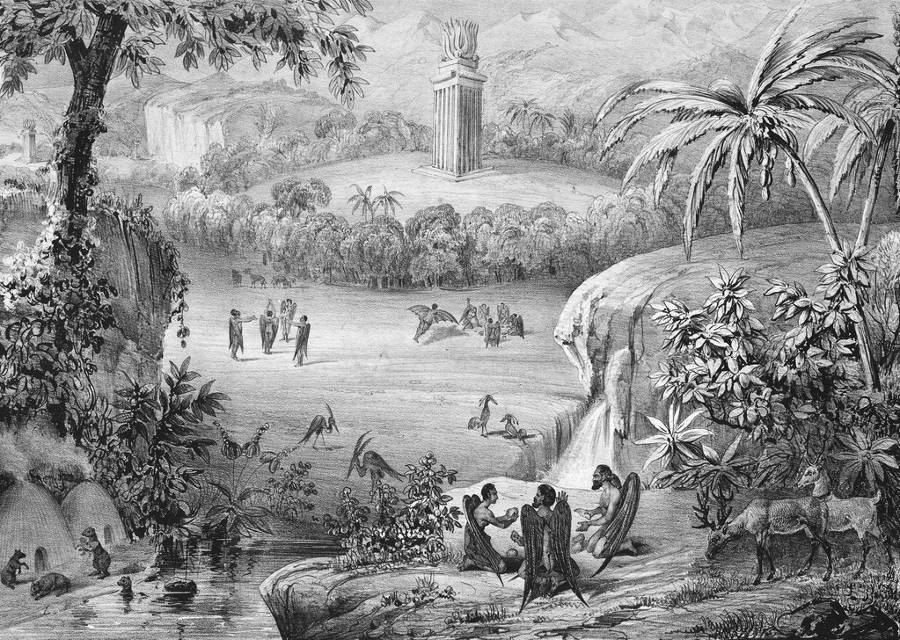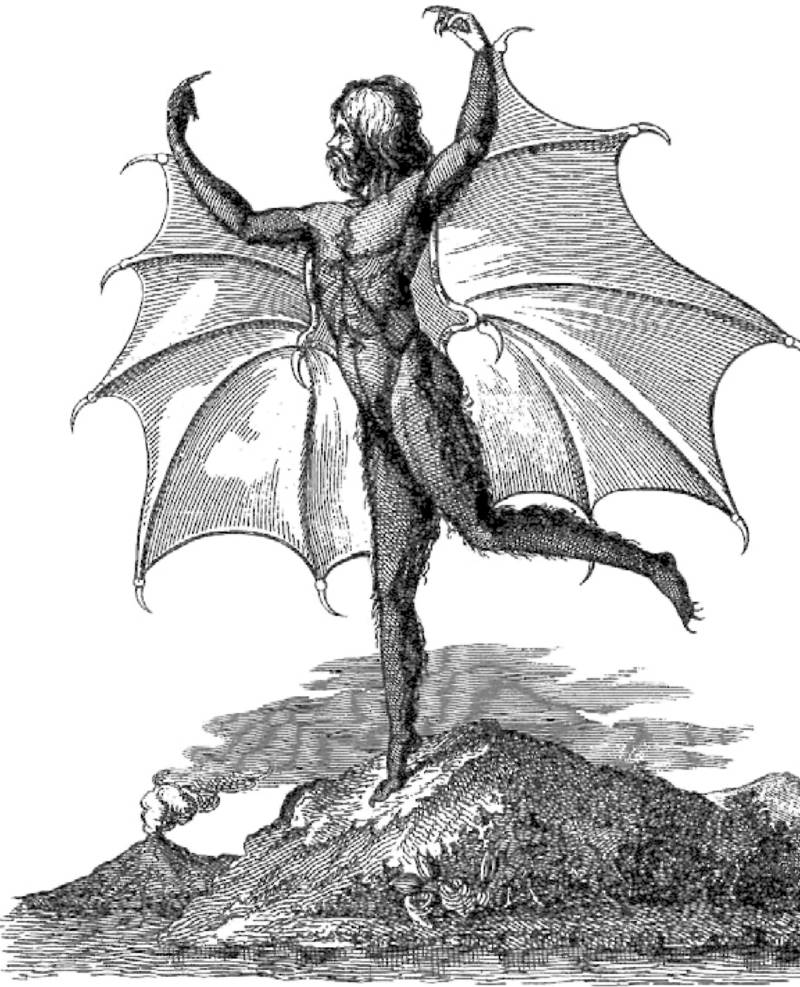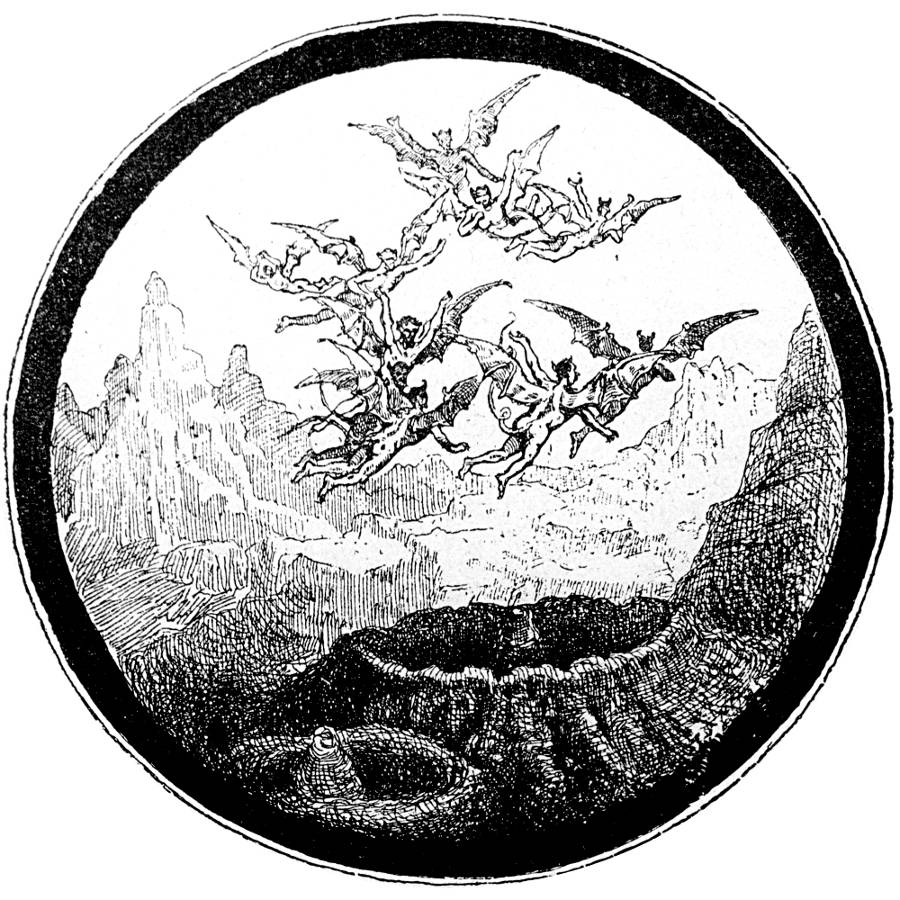Sir John headed a group of astronomers who had finally succeeded in setting up a marvellously powerful telescope on the Cape of Good Hope, according to the Sun’s report. Through this great instrument he discovered “wondrous secrets which had been hid from the eyes of all men that had lived since the birth of time.” Most amazing of these wonders was the revelation of life on the moon.
Far from being a barren, uninhabited planet, the moon had strange, lush vegetation, weird animals with hairy masks to guard their eyes against glare—and winged men and women! These happy little lunar people, who stood scarcely four feet high, wore no clothes. Their bodies, though, were covered with a bear-like (!) fur and when they landed on the ground, they walked “in an erect and dignified manner.”
 Lunar Animals and other Objects
Lunar Animals and other Objects
 French Illustration depicting lunar temples that Sir John Herschel claimed he saw in his observatory. The picture features a pastoral setting with plants, animals and winged people, with a temple building in the background.
French Illustration depicting lunar temples that Sir John Herschel claimed he saw in his observatory. The picture features a pastoral setting with plants, animals and winged people, with a temple building in the background.
 “They averaged four feet in height, were covered, except on the face, with short and glossy copper-colored hair, and had wings composed of a thin membrane, without hair, lying snugly upon their backs, from the top of the shoulders to the calves of the legs. The face, which was of a yellowish flesh color, was a slight improvement upon that of the large orang outang, being more open and intelligent in its expression, and having a much greater expansion of forehead. . . . The hair on the head was a darker color than that of the body, closely curled, but apparently not woolly, and arranged in two curious semi-circles over the temples of the forehead.”
“They averaged four feet in height, were covered, except on the face, with short and glossy copper-colored hair, and had wings composed of a thin membrane, without hair, lying snugly upon their backs, from the top of the shoulders to the calves of the legs. The face, which was of a yellowish flesh color, was a slight improvement upon that of the large orang outang, being more open and intelligent in its expression, and having a much greater expansion of forehead. . . . The hair on the head was a darker color than that of the body, closely curled, but apparently not woolly, and arranged in two curious semi-circles over the temples of the forehead.”
 Selenites seen in Herschel’s telescope, according to Flammarion.
Selenites seen in Herschel’s telescope, according to Flammarion.